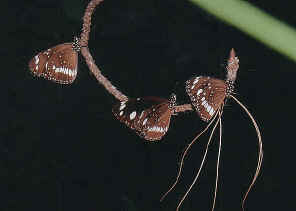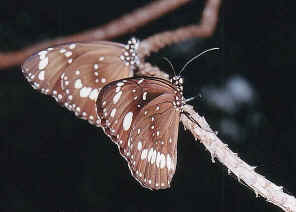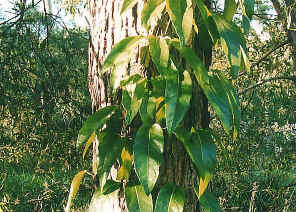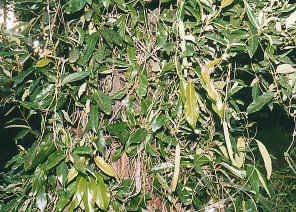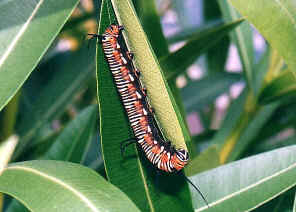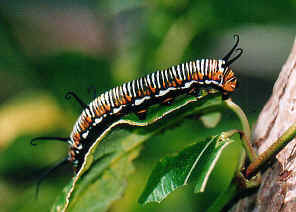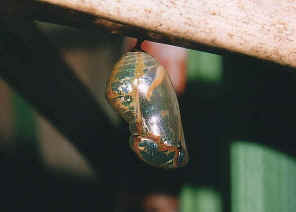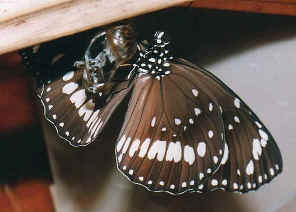|
|
Common Australian Crow - Euploea core corinna
FAMILY NYMPHALIDAE
This page contains pictures and information about Common Australian Crow Butterflies in the Brisbane area, Queensland, Australia.
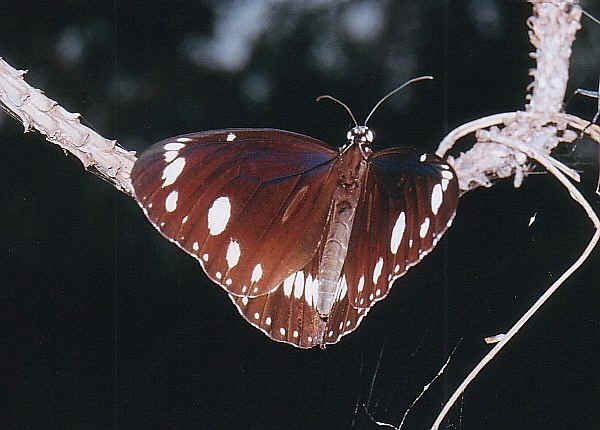
- Male, wingspan 90mm
Common Australian Crow Butterflies are also called Oleander Crow. The above picture shows a male, notice his narrow opaque make on the forewing, which release perfume to attach the female. This is the most common butterfly in Brisbane. In summer, we see them everyday, everywhere and even in the city. We sometimes see them in winter, although not so often.
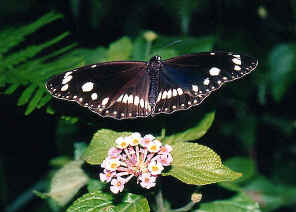
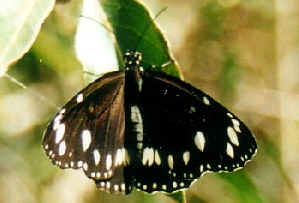
- Female, wingspan 90mm
- Common Australian Crow Butterflies are shiny black in colour with scattered white marks on their wings. They reflect the dark blue colour under sun light. Male and female look similar except male has the narrow opaque make on the forewing.
- At night the butterflies aggregate together in sheltered area.
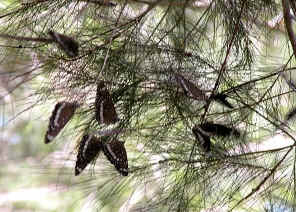
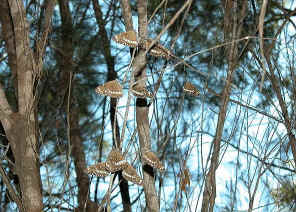
- In winter their aggregation may even be in a very large number.
- Monkey Rope, Strawpod - Common Australian Crow' host plant
- Parsonsia straminea
- The butterflies lay eggs on vine plants Monkey Rope Parsonsia stramine, which is common in Brisbane bushland. The plant is a climbing woody vine holding on trees. Leaves are in opposite pairs. There will be the small pale yellowish-pink flowers on early summer. Seed pod can be seen in late summer. When the seed pod opens, there are seeds with long white hair.
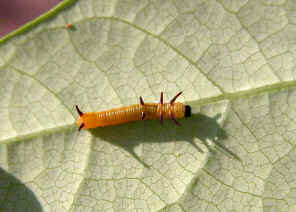
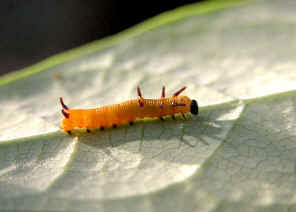
- Early instars, body length 10mm
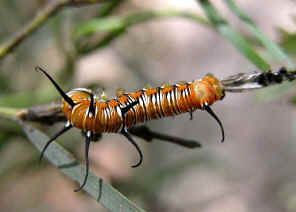
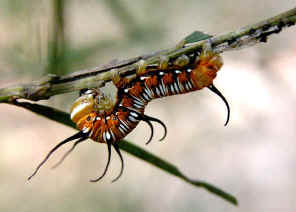
- Mid instars, body length 40mm
- The butterflies also lay eggs on oleander Nerium sp. So the butterflies are also called Oleander Crow.
- Late instars, body length 50mm
- The above pictures show the caterpillars feeding on oleander leaf (first picture) and Monkey Rope leaf (second picture) freely during the day, without worrying about predators. The caterpillar feed on those plants which are poisonous to birds and mammals. The caterpillar somehow can tolerate the poison and store them in their body. Both the caterpillar and adult butterfly are then poisonous. Birds and other predators will avoid them.
-
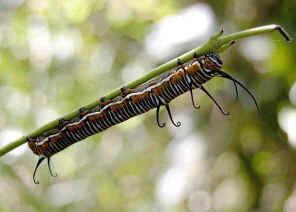
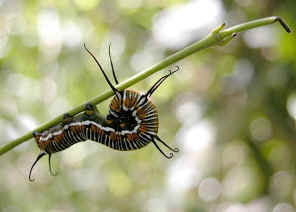
- The caterpillars have four pairs of filaments on their body. They have narrow black and white bands with some orange colour. This colour pattern is a warning sign to the predators, such as birds, that “I am poisonous, don’t eat me.” When disturbed, the caterpillar rolls-up part of its body with the head in the center.
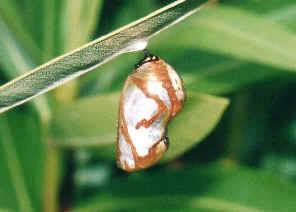

- Crow caterpillars pupate on food plants or other plants near the food plants. In early stage, the Crow Butterfly pupa is metallic brown in colour with silvery patterns. Their pupa usually be found underneath a leaf.
- About two weeks later, just before the adult emerges, the black and write patterns can be seen under the transparent pupa skin.
- It usually takes about two weeks time in summer for the pupa stage. The above picture show the Crow just hatched from its pupa.
- The Crow caterpillars and butterflies store the poison from their food plants in their body to against their predators. However, they are not free from natural enemy. We had raised some Common Australian Crows from caterpillars. We found that some of the caterpillars were parasitised by the Tachinid Flies.
Butterfly to find a Mate
- Male butterflies are believed to look for their mate by eye-sight. Some species, such as the Australian Crow and Orchard Swallowtail, patrol the field in search of females. Some species, like the Common Eggfly, take up and wait in some good positions, such as the opening and clearings where the females will pass by. Some other species, e.g. the Glasswing Butterfly, found gathering around hill tops.
- However, the butterflies vision may not be very acute as sometimes they may made mistakes. They may approach same sex or even other species butterflies. So the male will also recognize the sexual behaviour patterns of the female.
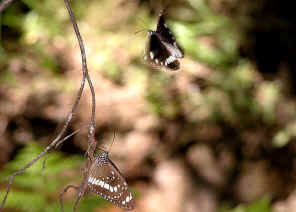
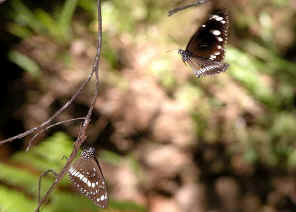
- The male Australian Crow fluttering above the female.
- Once the male recognizes a female, he will stimulate her sexually so that mating can take place. In Australian Crow the male has the scent-glands on the front wings. He will flutter above the female to diffuse his perfume around the female. If he successful, she will settle and mating can take place.
- After mating, female butterfly will look for their caterpillars' host plants, lay eggs and start the new life cycle.
- Reference and Link:
- 1. Insects
of Australia, CSIRO, Division of Entomology, Melbourne University
Press, 2nd Edition 1991, p897.
- 2. Insects of Australia and New Zealand - R. J. Tillyard, Angus & Robertson, Ltd, Sydney, 1926, p461.
- 2. Insects of Australia and New Zealand - R. J. Tillyard, Angus & Robertson, Ltd, Sydney, 1926, p461.
